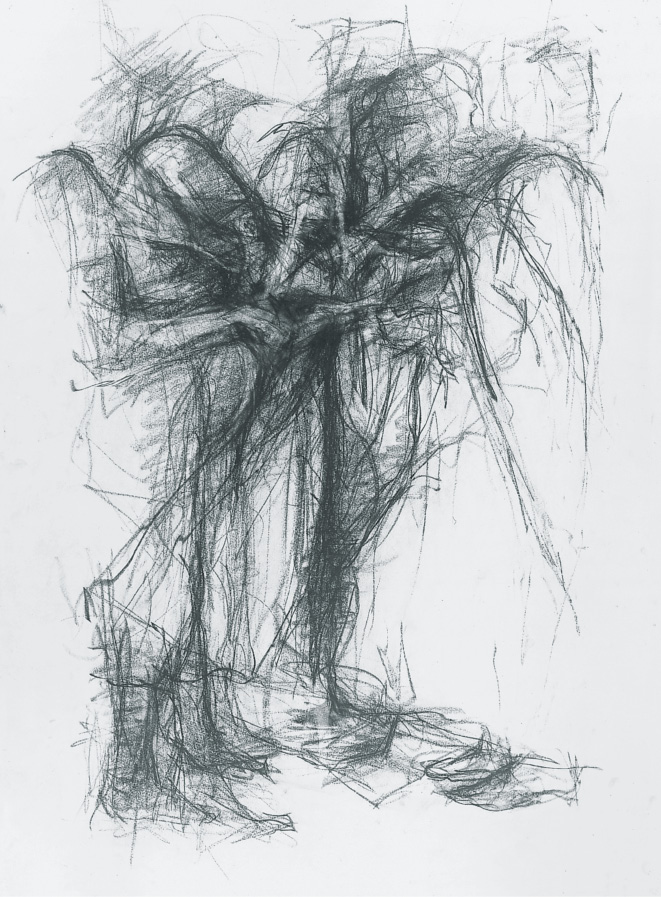DIRTY DRAWING
ADVANCED PROJECTS

Having explored the fundamental vocabulary of freehand drawing in first year, students develop drawings based on themes of their own choosing in the Advanced Drawing Seminar, which meets weekly for extensive group and individual critiques. A number of questions might be posed: How are these freely chosen themes relevant to the education of an architect? What is the value in drawing the surge forward of jockeys on horseback, the body’s ritual movements in throwing a pot, the bravura gestures of a pianist’s arms and hands at work, the fixed location of pastured cows? How would tracking these images develop an architect’s spatial vocabulary?
The study of the other arts—literature, poetry, film, dance—is important in expanding the architect’s mind and vision. But all too often, if an advanced drawing course is in an architecture-school curriculum, it is held captive to utility. It is likely to be viewed either as a means of representation of “built” projects or as a “hobby” class—draw the model for 20 minutes, take a break, turn the page, draw the model again.
Imagination lies in the realm of memory and dreams, deeply rooted in the facts, forms, events, and spaces of our actual lives. Flights of fancy take off from that which can be touched, tasted, measured, and observed. All memory is set in past or recent circumstance. We dream in images, as Friedrich Nietzsche proposed in The Birth of Tragedy (1867)1. These images have locations—rooms, streets, bridges, oceans. However, the development of a project that ranges from the observable to the realm of imagination requires a certain level of technical proficiency, a grasp of the basic concepts of drawing.


FIGURES 1 and 2
Taku Shimizu, studies of hands derived from Leonardo da Vinci, Last Supper, 1498. Charcoal on newsprint. The surface of the paper acts as a kind of foil on which the gestural movements of the hands are projected and superimposed. The process of distilling (“drawing”) the hands from the context begins to alter the spatial relationship between the apostles, and by extension, re-establishes extents of the space.
The “dirt” in the above heading refers to the fallout from charcoal, pencil, pastel, pen, and ink wash; it is the fingerprints, smudges, erasures, spatters, and drips of wash. It derives from the repetitive process of searching through drawing, of sifting through layers to find the gold—the essential element. The struggle to conquer a particular medium is only a part of the endeavor—it is the struggle to find resonance between the visual world as it engages our eye and the realm of our imaginings.
Although dirty drawing is at the other end of the graphic spectrum from what might be achieved in drafting with an instrument-aided, finely pointed 9H pencil or the unvarying line generated on a computer, the drawings of the free hand serve to inform the mind and hand that employ these tools—tools indeed imperative to professional practice. The truly free hand makes investigations that to some appear messy but that have their own aesthetic quality. These drawings serve to clarify the direction of the next step and simultaneously clarify (or even reformulate) the meaning and intent of the theme.
At this level of drawing education, the student learns to create drawings that incorporate themes that have grown in the crucible of each individual imagination, thought, and experience. Like the process of creative writing in which the author writes and rewrites again and again, the drawing process goes beyond merely correcting or expunging lines or tonalities that seemed tentatively or clumsily embraced in the first study. It simultaneously leads to rethinking and clarifying the direction of the intended work itself. In working toward that goal, the development of technique will simultaneously be honed.